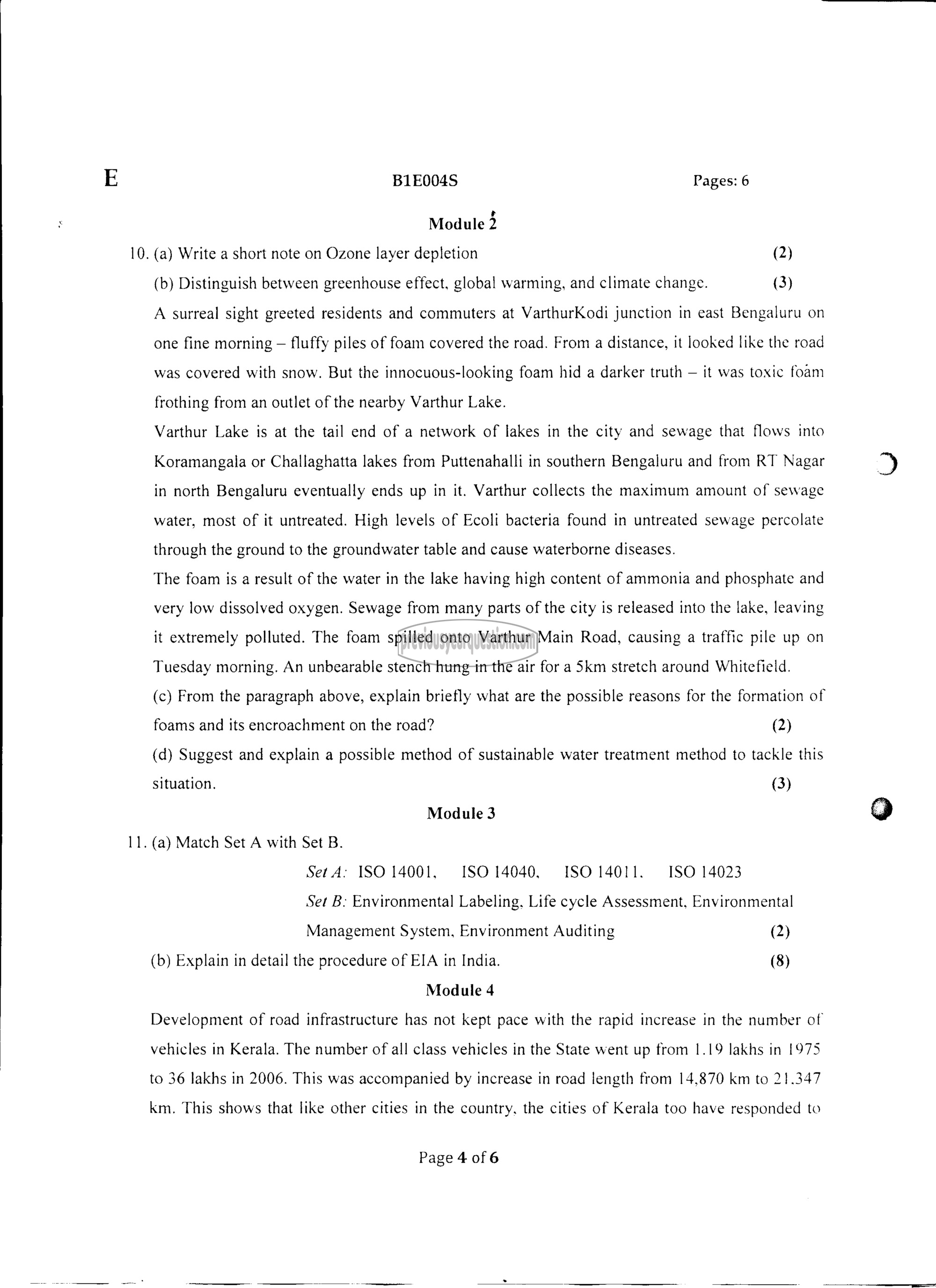APJ ABDUL KALAM TECHNOLOGICAL UNIVERSITY Previous Years Question Paper & Answer
Semester : S1 and S2
Subject : INTRODUCTION TO SUSTAINABLE ENGINEERING
Year : 2017
Term : JULY
Branch : MECHANICAL ENGINEERING
Scheme : 2015 Full Time
Course Code : BE 103
Page:4
B1E004S Pages: 6
Module 3
10. (a) Write a short note on Ozone layer depletion (2)
(b) Distinguish between greenhouse effect, global warming, and climate change. (3)
A surreal sight greeted residents and commuters at VarthurKodi junction in east Bengaluru on
one fine morning — fluffy piles of foam covered the road. From a distance, it looked like the road
was covered with snow. But the innocuous-looking foam hid a darker truth — it was toxic foam
frothing from an outlet of the nearby Varthur Lake.
Varthur Lake is at the tail end of a network of lakes in the city and sewage that flows into
Koramangala or Challaghatta lakes from Puttenahalli in southern Bengaluru and from RT Nagar
in north Bengaluru eventually ends up in it. Varthur collects the maximum amount of sewage
water, most of it untreated. High levels of Ecoli bacteria found in untreated sewage percolate
through the ground to the groundwater table and cause waterborne diseases.
The foam is a result of the water in the lake having high content of ammonia and phosphate and
very low dissolved oxygen. Sewage from many parts of the city is released into the lake, leaving
it extremely polluted. The foam spilled onto Varthur Main Road, causing a traffic pile up on
Tuesday morning. An unbearable stench hung in the air for a Skm stretch around Whitefield.
(c) From the paragraph above, explain briefly what are the possible reasons for the formation of
foams and its encroachment on the road? (2)
(d) Suggest and explain a possible method of sustainable water treatment method to tackle this
situation. (3)
Module 3
. (a) Match Set A with Set B.
SetA: 150 14001, 150 14040. 150 14011. ISO 14023
Set 8. Environmental Labeling. Life cycle Assessment, Environmental
Management System, Environment Auditing (2)
(b) Explain in detail the procedure of 1:14. مأ 11018. (8)
Module 4
Development of road infrastructure has not kept pace with the rapid increase in the number of
vehicles in Kerala. The number of all class vehicles in the State went up from 1.19 lakhs in 1975
to 36 lakhs in 2006. This was accompanied by increase in road length from 14,870 km to 21.347
km. This shows that like other cities in the country, the cities of Kerala too have responded to
Page 4 of 6
